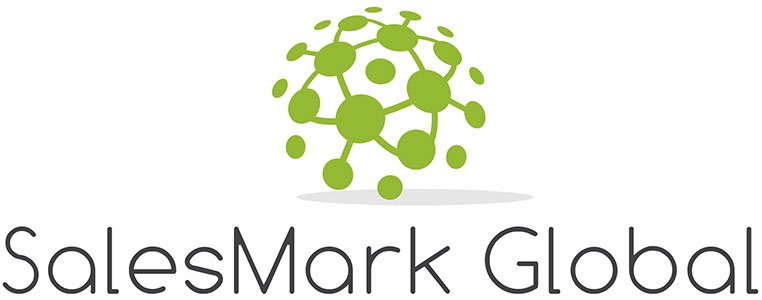Unlock the power of customer segmentation! Discover 7 effective methods for Targeting Customers.
Table of contents
1. What Is Customer Segmentation and Why Does It Matter?
2. Demographic Segmentation
3. Geographic Segmentation
4. Psychographic Segmentation
5. Behavioral Segmentation
6. Firmographic Segmentation (For B2B Markets)
7. Technographic Segmentation
8. Customer Journey Segmentation
9. Advanced Customer Segmentation with AI and Big Data
10. Integrating Segmentation into Marketing and Sales Strategies
10.1 Use Multichannel Strategies
10.2 Continuously Monitor Segments
10.3 Align Teams
11. Challenges in Customer Segmentation and How to Overcome Them
As the marketing environment increasingly becomes customer-centered, it is becoming obsolete to have generic approaches to the target market. Thus, customer segmentation, the division of a target market into smaller subsets, is a powerful strategy that lets organizations fine-tune their approaches to marketing and selling. With the application of customer data and analytics, organizations can gain insights on customer expectations, actions, and requirements in an effort to design befitting engagements with the aim of customer retention. Ranging from demographic segmentation to the very sophisticated segmentation using artificial intelligence and big data, mastering segmentation serves as a way of improving on the ability to attract, retain, and satisfy customers. In this guide, seven ways of segmentation that can be applied to improve business strategies are discussed.
1. What Is Customer Segmentation and Why Does It Matter?
Customer segmentation is a strategy that involves grouping the large target market into several smaller segments with common characteristics in terms of demographics, behavior, preferences, or needs. It helps business firms to quantify the customers’ data and derive meaningful insights that can be used to fine-tune the marketing and sales efforts.
By segmenting their audience, companies can:
- Deliver tailored solutions that appeal to targeted customer segments.
- Customer experience improvement and commitment.
- To ensure that maximum ROI for marketing and sales campaigns is achieved, organizations should direct additional resources to high-value segment areas.
- Enhance customer targeting and streamline customer acquisition efforts in order to reach out to customers effectively.
The success of the segmentation process relies greatly on the ability to access timely and accurate information regarding buyers and the utilization of sophisticated tools in the analysis of this information. These tools help firms to spot trends, comprehend consumers’ actions, and anticipate future requirements.
The following sections discuss seven of the most popular and effective forms of segmentation: The first form of basic segmentation is demographic segmentation. Various forms of divides in which consumers can be sorted include geographic segmentation. The third kind of segmentation approach is psychographic segmentation. A fourth form of segmentation is technological segmentation. A fifth form of segmentation is behavioral segmentation. The sixth form of segmentation is journey-based segmentation.
2. Demographic Segmentation
It involves grouping customers according to characteristics that are easy to quantify, like age, gender, interest, education, marital status, and employment status.
Key Insights Gained:
- Understanding income levels helps design pricing strategies.
- Age and gender insights guide product development and marketing campaigns.
- Education and occupation data can shape messaging for specific audience groups.
Application in Marketing Strategy:
For instance, luxury products such as cars and clothes advertise to high-income earners, while educational institutions market their products to people with certain academic abilities. This type of segmentation is popular for its simplicity and the possibility to obtain the necessary data through mail, questionnaires, customer records, and other means.
3. Geographic Segmentation
The demographic variable divides the customers into groups according to some physical characteristics, which include age, gender, income level, education level, marital status, and occupation. It is one of the easiest and most common techniques because data from surveys, customer lists, and public records can be easily obtained.
Key Insights Gained:
- Income Levels: Help businesses design pricing strategies that align with customers’ financial capacity.
- Age and Gender: Influence product development and marketing efforts, ensuring they resonate with specific groups.
- Education and Occupation: Shape targeted messaging and campaigns for well-defined audience segments.
Application in Marketing Strategy:
This segmentation technique is useful in the sense that it helps brands interact with the populace better. For example, luxury products target their advertising messages to people with high income, using the message of prestige and quality, whereas educational institutions target their message to students or working individuals who require further education. Demographic segmentation can be described as a fundamental method of categorizing clients into groupings and, as such, is fundamental to the development of appropriate and effective marketing strategies.
This is because firms must look for factors that define customers and market them appropriately in a bid to influence their behavior towards a certain outcome.
4. Psychographic Segmentation
Psychographic segmentation divides customers according to their psychic characteristics like their personality, interests, values, lifestyle, and attitudes.
The Power of Understanding Psychographics:
Unlike the first two approaches, this approach deals more with appeal, which establishes deeper relations with the customer.
Techniques for Psychographic Analysis:
- Surveys and interviews to uncover customer interests and opinions.
- Social media analysis to gauge lifestyle preferences and values.
Real-World Example:
Psychographic segmentation is widely used by the fitness brands in order to appeal to the health-conscious customer base. Likewise, socially responsible organizations attract self-identified socially responsible consumers through communicating sustainability.
While psychographic data is a crucial asset for the fast-paced ad campaigns in particular, it can be used to create highly targeted campaigns.
5. Behavioral Segmentation
Behavioral segmentation is based on the response of customers to a particular brand, their usage patterns, frequency of purchase, and even their receptiveness to marketing communication.
Core Variables in Behavioral Segmentation:
- Purchase frequency and recency.
- Brand loyalty and customer journey stage.
- Response to promotions and discounts.
Enhancing Customer Retention:
Behavioral data helps businesses identify loyal customers for rewards programs and target potential churners with re-engagement campaigns.
Case in Point:
Within this category, internet retailing companies adopt behavioral segmentation by offering related products depending on the products viewed or bought in the past, thus boosting sales conversion. This approach makes it possible to guide the marketing activities towards the right activities that seek to yield the intended results.
6. Firmographic Segmentation (For B2B Markets)
Firmographic segmentation applies to B2B markets, categorizing companies based on characteristics such as industry, company size, revenue, and location.
Why It’s Critical for B2B Success:
- Helps identify the most profitable segments.
- Aligns sales strategy with the specific needs of businesses.
Key Variables to Consider:
- Industry vertical (e.g., healthcare, technology, manufacturing).
- Business size (startups vs. enterprises).
Geographic location for regional sales efforts.
Example:
A SaaS provider may target mid-sized tech companies with cloud-based solutions, while offering custom enterprise packages for larger organizations. By aligning offerings with firmographic insights, businesses can strengthen their value proposition.
7. Technographic Segmentation
Technographic segmentation focuses on customers’ technology preferences and usage patterns. This method is particularly relevant for technology-driven industries.
How It Works:
- Identifying software, hardware, and tools used by customers.
- Understanding digital behaviors, such as app usage and device preferences.
Strategic Advantages:
- Tech companies can design solutions compatible with their customers’ existing systems.
- Marketers can identify trends in technology adoption to stay ahead of competitors.
Example Application:
A marketing automation platform might segment its audience based on CRM tools they use, tailoring its messaging to integrate seamlessly with those systems.
8. Customer Journey Segmentation
This advanced approach categorizes customers based on their stage in the customer journey, from awareness to consideration, purchase, and post-purchase.
Why It’s Game-Changing:
- Allows businesses to craft stage-specific strategies.
- Enhances customer satisfaction by addressing immediate needs.
Strategies by Stage:
- Awareness: Focus on educational content and brand visibility.
- Consideration: Provide detailed product comparisons and reviews.
- Purchase: Use incentives like discounts or free trials.
- Post-purchase: Strengthen loyalty with personalized follow-ups and support.
By mapping the customer journey, businesses can deliver relevant touchpoints at every interaction, fostering long-term relationships.
9. Advanced Customer Segmentation with AI and Big Data
Modern technology has revolutionized segmentation, enabling deeper insights and dynamic strategies:
AI-Driven Personalization:
Big data is examined by artificial intelligence to identify subtle trends in the purchasing process of customers. The segments are further refined with the help of machine learning algorithms to make the targeting even better.
Real-Time Data Analysis:
Customer data is processed in real-time through big data platforms; the marketing process is relevant and timely.
Predictive Analytics:
It makes it easy to predict the behavior of customers in the market through the use of predictive models, thus making it easier for established businesses to try to anticipate needs and act accordingly.
For example, AI-based chatbots can provide customized services in line with the customer’s demands, enhancing the interaction and, therefore, satisfaction.
10. Integrating Segmentation into Marketing and Sales Strategies
It is therefore important to note that while customer segmentation is a powerful tool, its use depends on how it is carried out. In this context, it is crucial for businesses to employ a more systematic approach, which would guarantee that their actions are inspiring the desired reactions among target audiences and delivering the intended results.
10.1 Use Multichannel Strategies
Communicate with the customers in the means they use, for example, through email, social media, via apps, or face-to-face. Marketing to the targets means that businesses are creating communications and interactions that are specific to the customer to gain their attention and support.
10.2 Continuously Monitor Segments
Customer behavior is not stationary, and it is affected by many factors such as trends, technology, and changing needs. To remain relevant, segmentation models should be updated frequently as current data and information on customers are collected. This helps to ensure that strategies stay relevant as they relate to the endorsements and behaviors of each segment.
10.3 Align Teams
For this, the marketing team should work closely with the sales and customer service departments to ensure that clients are treated uniformly. When all departments are integrated, everyone from top to bottom can align messages and work together, making the overall customer experience more cohesive and leading to more retention.
When these practices are adopted, businesses are able to achieve the optimum benefits, which enhances the principles of segmentation, hence encouraging sustainable growth and profitability.
11. Challenges in Customer Segmentation and How to Overcome Them
The benefits of customer segmentation cannot be overemphasized, but businesses are equally faced with the following challenges: These are crucial steps in developing appropriate and sustainable strategies for segmentation.
- Data Accuracy: Customer data serves as the foundation for segmentation activities. However, the use of wrong or old information could result in wrong targeting and spending a lot of money. Segmentation models should be refreshed by performing data audits and cleaning exercises on data consistently.
- Over-Segmentation: It is also dangerous to create too many segments, as it thwarts marketing tactics, weakens focus, and strains resources. To sum up, the key strategic directive that businesses must follow concerns the search for necessity for meaningful and actionable segments that should always be balanced between high precision and feasibility.
- Balancing Personalization with Privacy: As the world adopts strict measures regarding personal data such as GDPR and CCPA, personalization should not override customer privacy. To be able to provide personalized service, businesses should disclose how data is being collected, protect such data, and obtain consent—vital aspects that help in building trust.
- By managing these challenges, companies are in a position to develop a good framework for segmentation, which in turn helps them in developing specific strategies to improve customer relations and, in essence, grow the business.
Conclusion
Customer segmentation is a business technique of categorizing a large set of consumers into smaller and well-defined groups by using certain standard parameters like demographic, behavioral, geographical, psychic, etc. This versatile tool assists businesses in comprehending different customer segments to tailor products and services to their needs, desires, and challenges adequately. From demographic and geographic segmentation to customer journey mapping and technographic analysis, all the segmentation methods offer insights that paint a better picture of the target market.
When it comes to customer acquisition, retention, and satisfaction, segmentation is a crucial element of skills that every professional must master when it comes to marketing and sales. Segmentation thus helps businesses in developing personalized experiences with the various segments in order to capture customer attention while also improving customer loyalty. Moreover, with the help of segmentation, one can understand where the maximum focus should be given to avoid umbrella campaigns or misused resources effectively and efficiently.
As the customers’ behavior becomes more intricate and the amount of data rises, the established segmentation techniques are becoming more enriched with the help of innovative analytics and artificial intelligence. Technologies such as machine learning, for instance, allow segmentation management in a dynamic mode that takes into consideration audience requirements and market conditions that change from time to time. This allows the business to not only keep up with competitors but to also develop a better understanding of the customer.
When marketing and sales strategies involve segmentation to focus on customers, long-term business and consumer relations are created and maintained.
Appropriate communication with the right message and custom solutions will ensure long-term performance and customer success in the context of growing competition.
Visit Our SalesMarkBlog Section to Uncover the Sales Strategies That Ignite Your Sales Journey!











